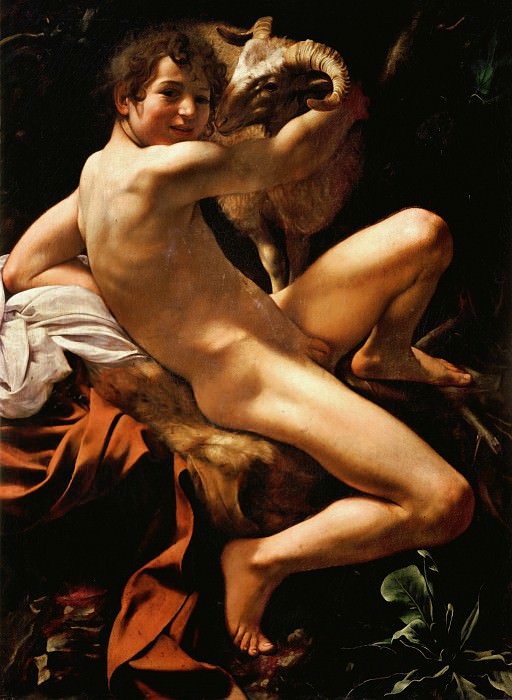John the Baptist Michelangelo Merisi da Caravaggio (1571-1610)
Michelangelo Merisi da Caravaggio – John the Baptist
Edit attribution
Download full size: 3359×4595 px (3,1 Mb)
Painter: Michelangelo Merisi da Caravaggio
Caravaggio was an Italian Renaissance painter and one of the greatest Baroque masters. Like most lovers of this style, he preferred abundance of detail to austerity, and brightness and saturation of color to pallor. Of all themes, he was most fond of mythical and religious motifs. His "John the Baptist" is a painting also called "The Young Man with the Sheep" because the usual image of the prophet is interpreted in an unusual way in it.
Description of Michelangelo Merisi da Caravaggio’s painting "John the Baptist" (The young man with the ram)
Caravaggio was an Italian Renaissance painter and one of the greatest Baroque masters. Like most lovers of this style, he preferred abundance of detail to austerity, and brightness and saturation of color to pallor. Of all themes, he was most fond of mythical and religious motifs.
His "John the Baptist" is a painting also called "The Young Man with the Sheep" because the usual image of the prophet is interpreted in an unusual way in it. As a rule, John is depicted at the dawn of his glory, when he was baptizing people on the Jordan River. Or as he walked through the desert, ragged and absorbed in inner silence.
What Caravaggio depicts, however, is not a grown man, not a prophet, but the boy that the prophet once was. He has curly hair, a simple, open face, dark eyes. Naked, he sits on a rock, barely covered by a piece of camel skin and his own clothes, and hugs the neck of a ram, looking slyly at the spectator. There is no grief or suffering in him. He is not yet the man who has left everything he had to preach the coming of the one who will baptize with fire.
He does not wear a girdle, the usual robe, of all the attributes of a prophet - a camel’s skin, and a ram is absolutely unsuitable for a prophet, because in most interpretations means lust. John, on the other hand, is usually depicted with a lamb, that is, with a little lamb.
Perhaps this approach may offend those who wish to see only holiness. But the very reminder that all holiness originally comes from dirt, is born in dirt, and matures in the human world is valuable. So Christ went to preach only when he was thirty-three. But forgetting this, both he and John and the saints are portrayed as adults all at once, as if there had never been a long journey from an ordinary child, as if there had never been anything but divine understanding in them.
Кому понравилось
Пожалуйста, подождите
На эту операцию может потребоваться несколько секунд.
Информация появится в новом окне,
если открытие новых окон не запрещено в настройках вашего браузера.
You need to login
Для работы с коллекциями – пожалуйста, войдите в аккаунт (open in new window).




















COMMENTS: 2 Ответы
Хитро. Писать кучу полунагих и голых порнишек и все прикрывать Иоанном Крестителем. Мастерство может и не пропьешь, но замылить страстями, опустить его уровень – легко. Это не Ботичелли с его трепетной нежностью.
Караваджо вовсе не новатор в этой теме – вспомните странного то ли Вакха то ли Иоанна Крестителя Леонардо из собраний Лувра Отличие в том что у Караваджо он лишен тайны – просто озорной красивый парень – откровенная пастораль – даже традиционная свето-тень никакой драматической нагрузки не дает
You cannot comment Why?
Perhaps it’s a close up of a painting of a person on a bed with a cat on his shoulder and a dog.